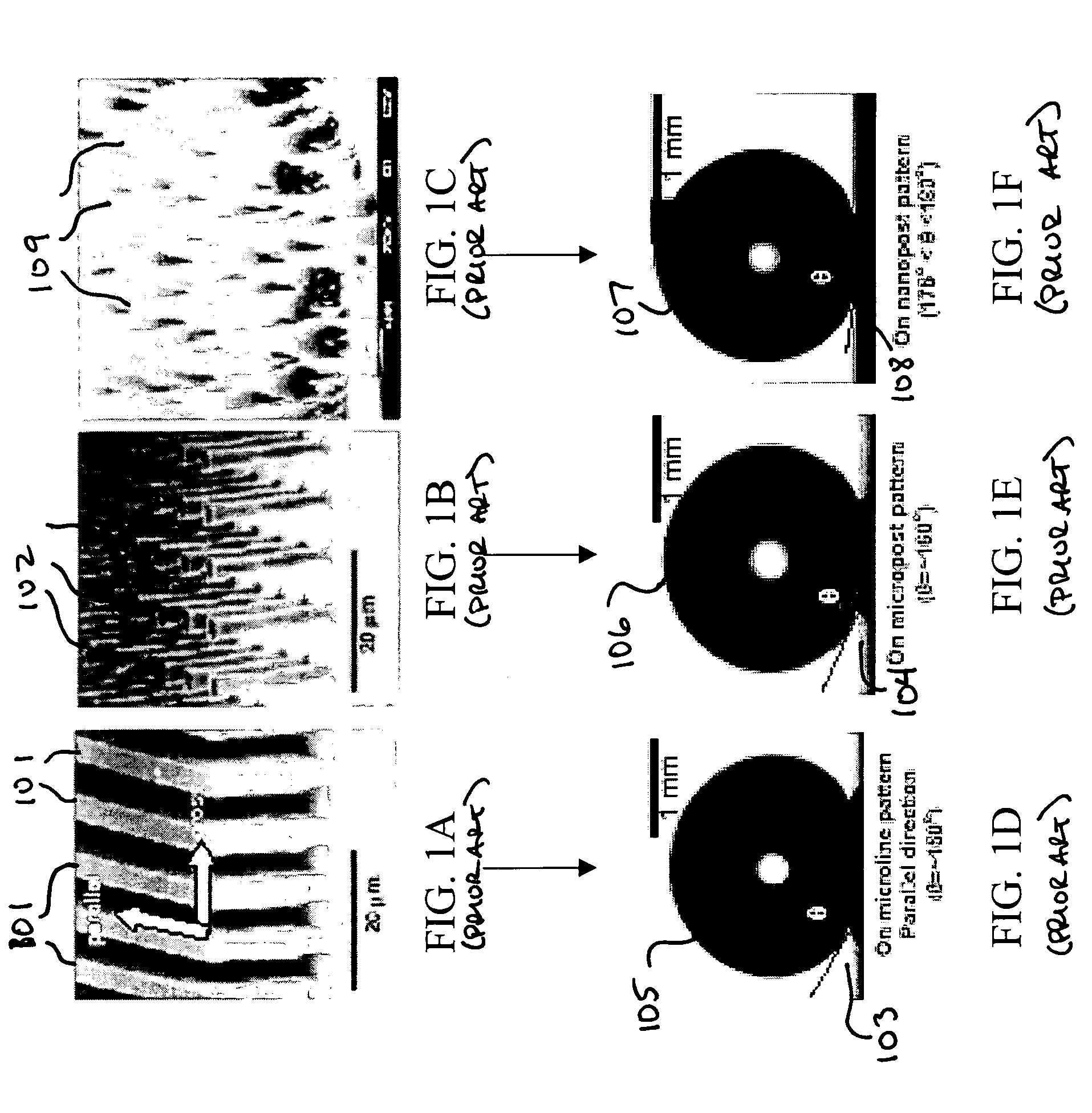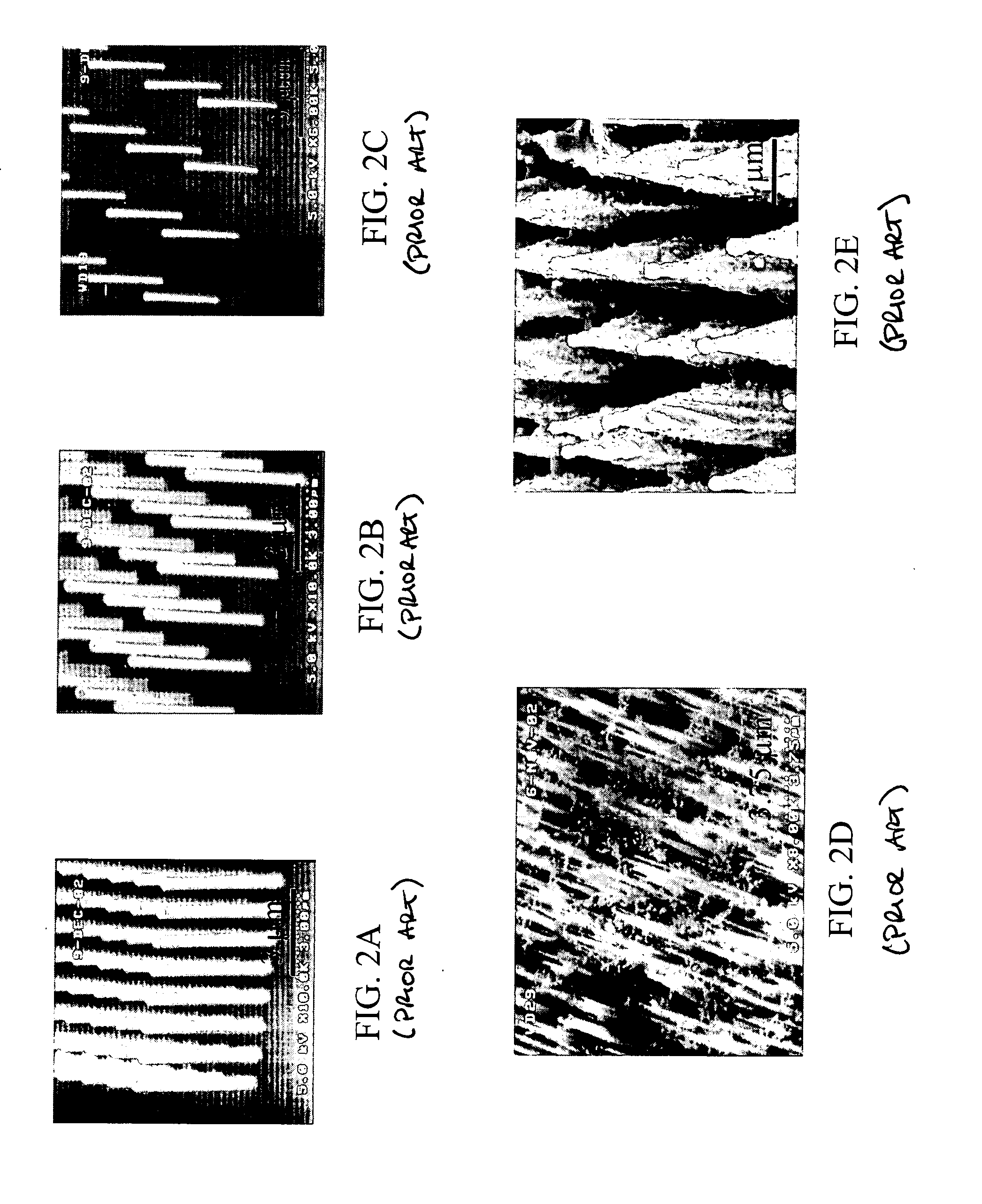Method and apparatus for controlling friction between a fluid and a body
a technology of fluid and body, applied in the direction of underwater equipment, special-purpose vessels, vessel construction, etc., can solve the problems of high friction between the device or structure and the fluid, underwater vehicles such as submarines or torpedoes, and experience a high level of friction, so as to reduce the friction between the fluid and the body, reduce the detrimental drag effect of friction, and reduce the effect of friction
- Summary
- Abstract
- Description
- Claims
- Application Information
AI Technical Summary
Benefits of technology
Problems solved by technology
Method used
Image
Examples
Embodiment Construction
Reducing the friction between a fluid and a body moving through that fluid is highly desirable in many situations. We have realized that such reductions may be achieved by using nanostructured or microstructured surfaces on such bodies. To date, nanostructures and / or microstructures have primarily been used in microfluidics applications (for example, small amounts of fluid disposed, illustratively, in a channel) to reduce the flow resistance exerted on the droplet. These applications are useful in understanding how nanostructures or microstructures can be used to reduce flow resistance of a liquid in contact with the surface. One such application is described in “Nanostructured Surfaces for Dramatic Reduction of Flow Resistance in Droplet-based Microfluidics”, J. Kim and C. J. Kim, IEEE Conf. MEMS, Las Vegas, Nev., January 2002, pp. 479-482, which is hereby incorporated by reference herein in its entirety. The Kim reference teaches that, by finely patterning the surface in contact ...
PUM
 Login to View More
Login to View More Abstract
Description
Claims
Application Information
 Login to View More
Login to View More - R&D
- Intellectual Property
- Life Sciences
- Materials
- Tech Scout
- Unparalleled Data Quality
- Higher Quality Content
- 60% Fewer Hallucinations
Browse by: Latest US Patents, China's latest patents, Technical Efficacy Thesaurus, Application Domain, Technology Topic, Popular Technical Reports.
© 2025 PatSnap. All rights reserved.Legal|Privacy policy|Modern Slavery Act Transparency Statement|Sitemap|About US| Contact US: help@patsnap.com



